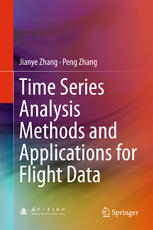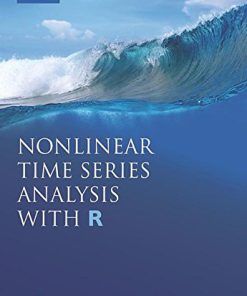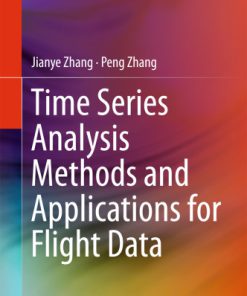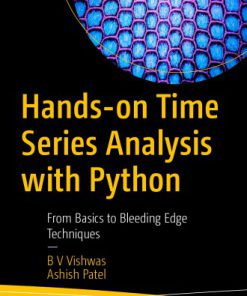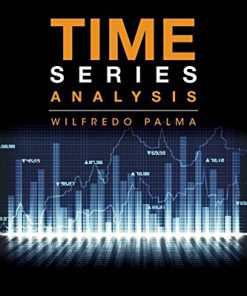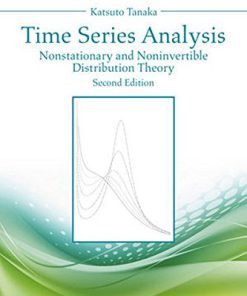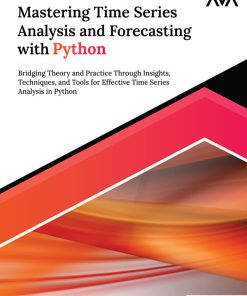Spectral Analysis for Univariate Time Series 2nd Edition by Donald 1108776175 9781108776172
$50.00 Original price was: $50.00.$25.00Current price is: $25.00.
Spectral Analysis for Univariate Time Series 2nd Edition by Donald Percival – Ebook Instant Download/Delivery ISBN(s): 1108776175, 9781108776172
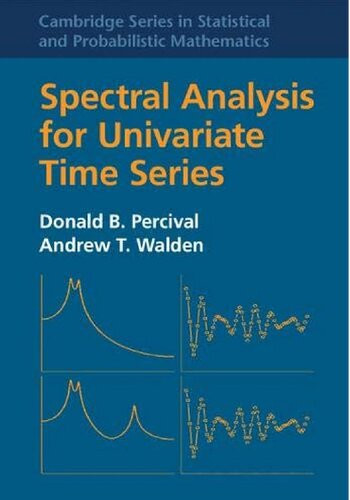
Product details:
- ISBN 10: 1108776175
- ISBN 13: 9781108776172
- Author: Donald
Spectral analysis is widely used to interpret time series collected in diverse areas. This book covers the statistical theory behind spectral analysis and provides data analysts with the tools needed to transition theory into practice. Actual time series from oceanography, metrology, atmospheric science and other areas are used in running examples throughout, to allow clear comparison of how the various methods address questions of interest. All major nonparametric and parametric spectral analysis techniques are discussed, with emphasis on the multitaper method, both in its original formulation involving Slepian tapers and in a popular alternative using sinusoidal tapers. The authors take a unified approach to quantifying the bandwidth of different nonparametric spectral estimates. An extensive set of exercises allows readers to test their understanding of theory and practical analysis. The time series used as examples and R language code for recreating the analyses of the series are available from the book’s website.
Table of contents:
- 1 Introduction to Spectral Analysis
- 1.0 Introduction
- 1.1 Some Aspects of Time Series Analysis
- Comments and Extensions to Section 1.1
- 1.2 Spectral Analysis for a Simple Time Series Model
- 1.3 Nonparametric Estimation of the Spectrum from Data
- 1.4 Parametric Estimation of the Spectrum from Data
- 1.5 Uses of Spectral Analysis
- 1.6 Exercises
- 2 Stationary Stochastic Processes
- 2.0 Introduction
- 2.1 Stochastic Processes
- 2.2 Notation
- 2.3 Basic Theory for Stochastic Processes
- Comments and Extensions to Section 2.3
- 2.4 Real-Valued Stationary Processes
- 2.5 Complex-Valued Stationary Processes
- Comments and Extensions to Section 2.5
- 2.6 Examples of Discrete Parameter Stationary Processes
- 2.7 Comments on Continuous Parameter Processes
- 2.8 Use of Stationary Processes as Models for Data
- 2.9 Exercises
- 3 Deterministic Spectral Analysis
- 3.0 Introduction
- 3.1 Fourier Theory – Continuous Time/Discrete Frequency
- Comments and Extensions to Section 3.1
- 3.2 Fourier Theory – Continuous Time and Frequency
- Comments and Extensions to Section 3.2
- 3.3 Band-Limited and Time-Limited Functions
- 3.4 Continuous/Continuous Reciprocity Relationships
- 3.5 Concentration Problem – Continuous/Continuous Case
- 3.6 Convolution Theorem – Continuous Time and Frequency
- 3.7 Autocorrelations andWidths – Continuous Time and Frequency
- 3.8 Fourier Theory – Discrete Time/Continuous Frequency
- 3.9 Aliasing Problem – Discrete Time/Continuous Frequency
- Comments and Extensions to Section 3.9
- 3.10 Concentration Problem – Discrete/Continuous Case
- 3.11 Fourier Theory – Discrete Time and Frequency
- Comments and Extensions to Section 3.11
- 3.12 Summary of Fourier Theory
- 3.13 Exercises
- 4 Foundations for Stochastic Spectral Analysis
- 4.0 Introduction
- 4.1 Spectral Representation of Stationary Processes
- Comments and Extensions to Section 4.1
- 4.2 Alternative Definitions for the Spectral Density Function
- 4.3 Basic Properties of the Spectrum
- Comments and Extensions to Section 4.3
- 4.4 Classification of Spectra
- 4.5 Sampling and Aliasing
- Comments and Extensions to Section 4.5
- 4.6 Comparison of SDFs and ACVSs as Characterizations
- 4.7 Summary of Foundations for Stochastic Spectral Analysis
- 4.8 Exercises
- 5 Linear Time-Invariant Filters
- 5.0 Introduction
- 5.1 Basic Theory of LTI Analog Filters
- Comments and Extensions to Section 5.1
- 5.2 Basic Theory of LTI Digital Filters
- Comments and Extensions to Section 5.2
- 5.3 Convolution as an LTI Filter
- 5.4 Determination of SDFs by LTI Digital Filtering
- 5.5 Some Filter Terminology
- 5.6 Interpretation of Spectrum via Band-Pass Filtering
- 5.7 An Example of LTI Digital Filtering
- Comments and Extensions to Section 5.7
- 5.8 Least Squares Filter Design
- 5.9 Use of Slepian Sequences in Low-Pass Filter Design
- 5.10 Exercises
- 6 Periodogram and Other Direct Spectral Estimators
- 6.0 Introduction
- 6.1 Estimation of the Mean
- Comments and Extensions to Section 6.1
- 6.2 Estimation of the Autocovariance Sequence
- Comments and Extensions to Section 6.2
- 6.3 A Naive Spectral Estimator – the Periodogram
- Comments and Extensions to Section 6.3
- 6.4 Bias Reduction – Tapering
- Comments and Extensions to Section 6.4
- 6.5 Bias Reduction – Prewhitening
- Comments and Extensions to Section 6.5
- 6.6 Statistical Properties of Direct Spectral Estimators
- Comments and Extensions to Section 6.6
- 6.7 Computational Details
- 6.8 Examples of Periodogram and Other Direct Spectral Estimators
- Comments and Extensions to Section 6.8
- 6.9 Comments on Complex-Valued Time Series
- 6.10 Summary of Periodogram and Other Direct Spectral Estimators
- 6.11 Exercises
- 7 Lag Window Spectral Estimators
- 7.0 Introduction
- 7.1 Smoothing Direct Spectral Estimators
- Comments and Extensions to Section 7.1
- 7.2 First-Moment Properties of Lag Window Estimators
- Comments and Extensions to Section 7.2
- 7.3 Second-Moment Properties of LagWindow Estimators
- Comments and Extensions to Section 7.3
- 7.4 Asymptotic Distribution of LagWindow Estimators
- 7.5 Examples of Lag Windows
- Comments and Extensions to Section 7.5
- 7.6 Choice of Lag Window
- Comments and Extensions to Section 7.6
- 7.7 Choice of LagWindow Parameter
- Comments and Extensions to Section 7.7
- 7.8 Estimation of Spectral Bandwidth
- 7.9 Automatic Smoothing of Log Spectral Estimators
- Comments and Extensions to Section 7.9
- 7.10 Bandwidth Selection for Periodogram Smoothing
- Comments and Extensions to Section 7.10
- 7.11 Computational Details
- 7.12 Examples of Lag Window Spectral Estimators
- Comments and Extensions to Section 7.12
- 7.13 Summary of Lag Window Spectral Estimators
- 7.14 Exercises
- 8 Combining Direct Spectral Estimators
- 8.0 Introduction
- 8.1 Multitaper Spectral Estimators – Overview
- Comments and Extensions to Section 8.1
- 8.2 Slepian Multitaper Estimators
- Comments and Extensions to Section 8.2
- 8.3 Multitapering of Gaussian White Noise
- 8.4 Quadratic Spectral Estimators and Multitapering
- Comments and Extensions to Section 8.4
- 8.5 Regularization and Multitapering
- Comments and Extensions to Section 8.5
- 8.6 Sinusoidal Multitaper Estimators
- Comments and Extensions to Section 8.6
- 8.7 Improving Periodogram-Based Methodology via Multitapering
- Comments and Extensions to Section 8.7
- 8.8 Welch’s Overlapped Segment Averaging (WOSA)
- Comments and Extensions to Section 8.8
- 8.9 Examples of Multitaper andWOSA Spectral Estimators
- 8.10 Summary of Combining Direct Spectral Estimators
- 8.11 Exercises
- 9 Parametric Spectral Estimators
- 9.0 Introduction
- 9.1 Notation
- 9.2 The Autoregressive Model
- Comments and Extensions to Section 9.2
- 9.3 The Yule–Walker Equations
- Comments and Extensions to Section 9.3
- 10 Harmonic Analysis
- 11 Simulation of Time Series
People also search:
use of time series analysis
spectral analysis time series
spectral analysis time series python
spectral analysis for physical applications
the spectral analysis of time series
You may also like…
Engineering - Aerospace Engineering
Science (General)
Computers - Computer Science
Hands-on Time Series Analysis With Python: From Basics To Bleeding Edge Techniques B. V. Vishwas
Mathematics
Time Series Analysis: Nonstationary and Noninvertible Distribution Theory 2nd Edition Katsuto Tanaka
Computers - Programming
Mathematics
Applied Time Series Analysis with R 2nd Edition by Wayne Woodward 9781498734271 1498734278



